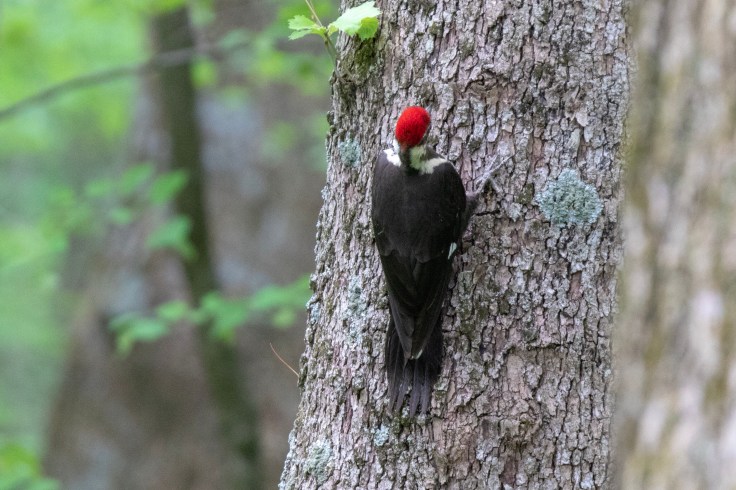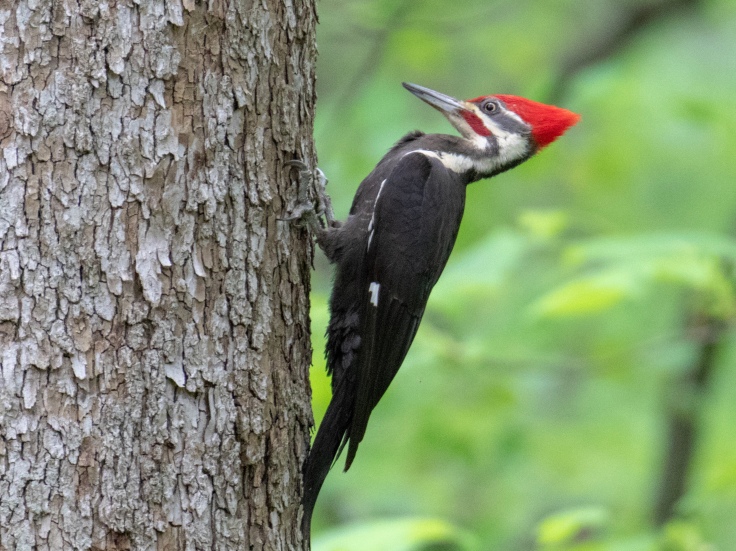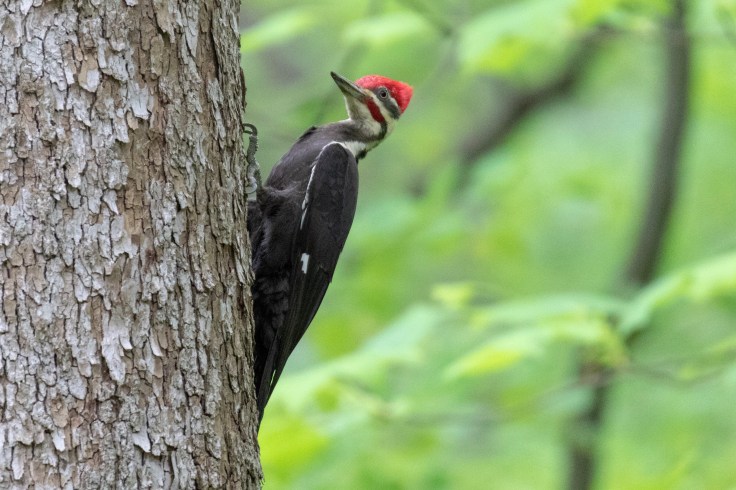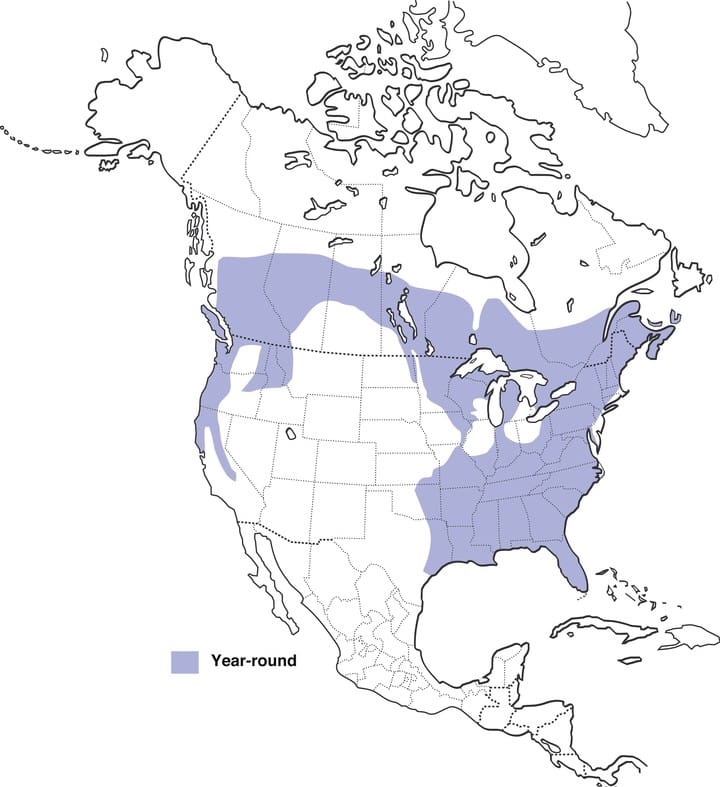I have to interrupt our normally scheduled program, on warblers and other migrants, to share this incredible bird encounter from yesterday! I (finally) made my way out of NW Ohio, after days of lingering, and planned a stop at Eagle Creek Park, outside of Indianapolis. I was so impressed by this park and its 3900 acres of forests and trails. I headed straight for the Ornithology Center – an impressive building with a plethora of educational resources and two wildlife viewing rooms, one that overlooks a large lake and one that overlooks feeders.
I parked and grabbed my hiking boots out of the back and proceeded to prepare myself for a hike. While shoeless, I heard a series of very loud, deep, resonant “kuk” notes, fired off in succession. You can imagine my surprise when I looked up to see a Pterodactyl flying toward me! Oh, wait, not a Pterodactyl….but pretty darn close…a Pileated Woodpecker! He briefly landed on a tree, showing me his red head and crest and long body (16.5″).

I was so excited in this moment! I have been hoping for an encounter with this incredible bird – North America’s largest woodpecker (well, presumably…assuming the Ivory-billed Woodpecker is, in fact, extinct). Woodpeckers are some of my favorite birds for a few key reasons:
- They generally don’t scare as easily as many songbirds so, typically, once found they can be enjoyed for more than a fleeting moment,
- They have zygodactyl feet (two forward-facing toes and two backward-facing toes),
- They have evolved some fascinating adaptations to protect their brains from the intense hammering and drumming they do will their bills and they drill into wood,
- Their unique drumming behaviors produce non-vocal sounds that can be used to identify different species of woodpecker.
But the sighting just got better! This bird flew to a tree even closer, directly in front of my car. I didn’t have shoes, but I did have my camera within reach, so I was lucky to get off a few shots before he departed deeper into the forest.


Ahhhh….such an incredible encounter! One that I will not easily forget. Pileated Woodpeckers are about the size of an American Crow, and are easily recognized by that flaming red crest, and strikingly large bill. Both males and females possess the characteristic red crest, but females lack the red cheek stripe and have a black forehead. They possess a tuft of yellow, bristly feathers over their nostrils that protect them from flying wood chips. In flight, their bold white underwings are visible and characteristic. This species must be the largest and most striking forest birds of North America. Their preferred prey are carpenter ants, and they will excavate large, impressive, rectangular holes in wood in pursuit of a meal. They won’t pass up other ants, wood boring beetle larvae, termites, or other insects and will also eat wild fruits and nuts. Their long, barbed tongues come in handy when attempting to extract large beetle larvae or termites lying deep in the wood.
Pileated Woodpeckers require large, standing dead trees and downed wood and can be found in evergreen, deciduous forests, or mixed forests. They seem to favor mature deciduous or mixed deciduous-conifer forests. They will inhabit second-growth forests and fragmented wood lots, as long as enough large trees are present. They are resident birds in North America and, although they are most common in the Southeast, their range extends northward and to the west. Range map, courtesy of All About Birds:








so there is a slim chance to see this guy in New York? I;ll keep an eye out!
LikeLike
I love when things like that happen!
LikeLike
Reblogged this on Wolf's Birding and Bonsai Blog.
LikeLike